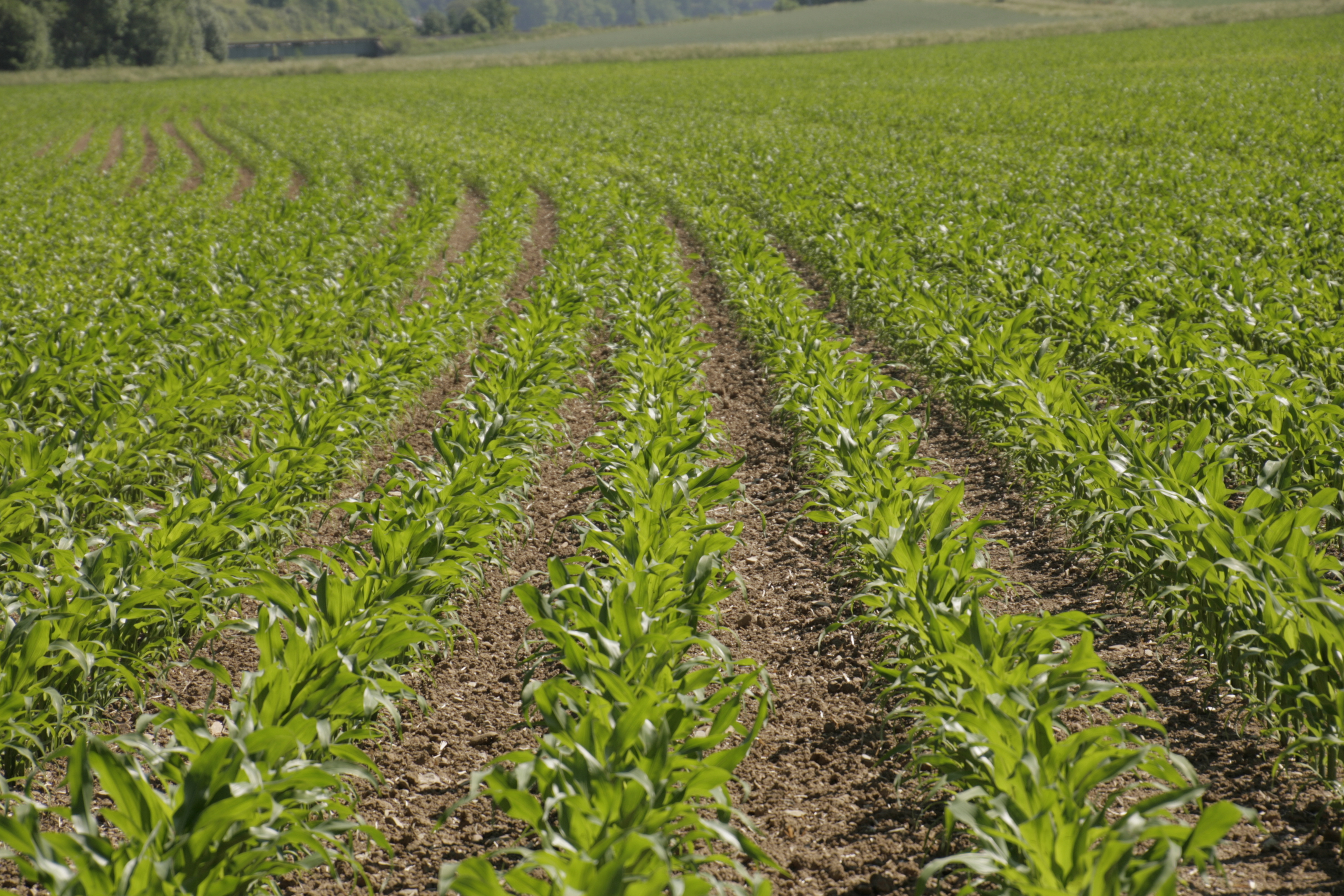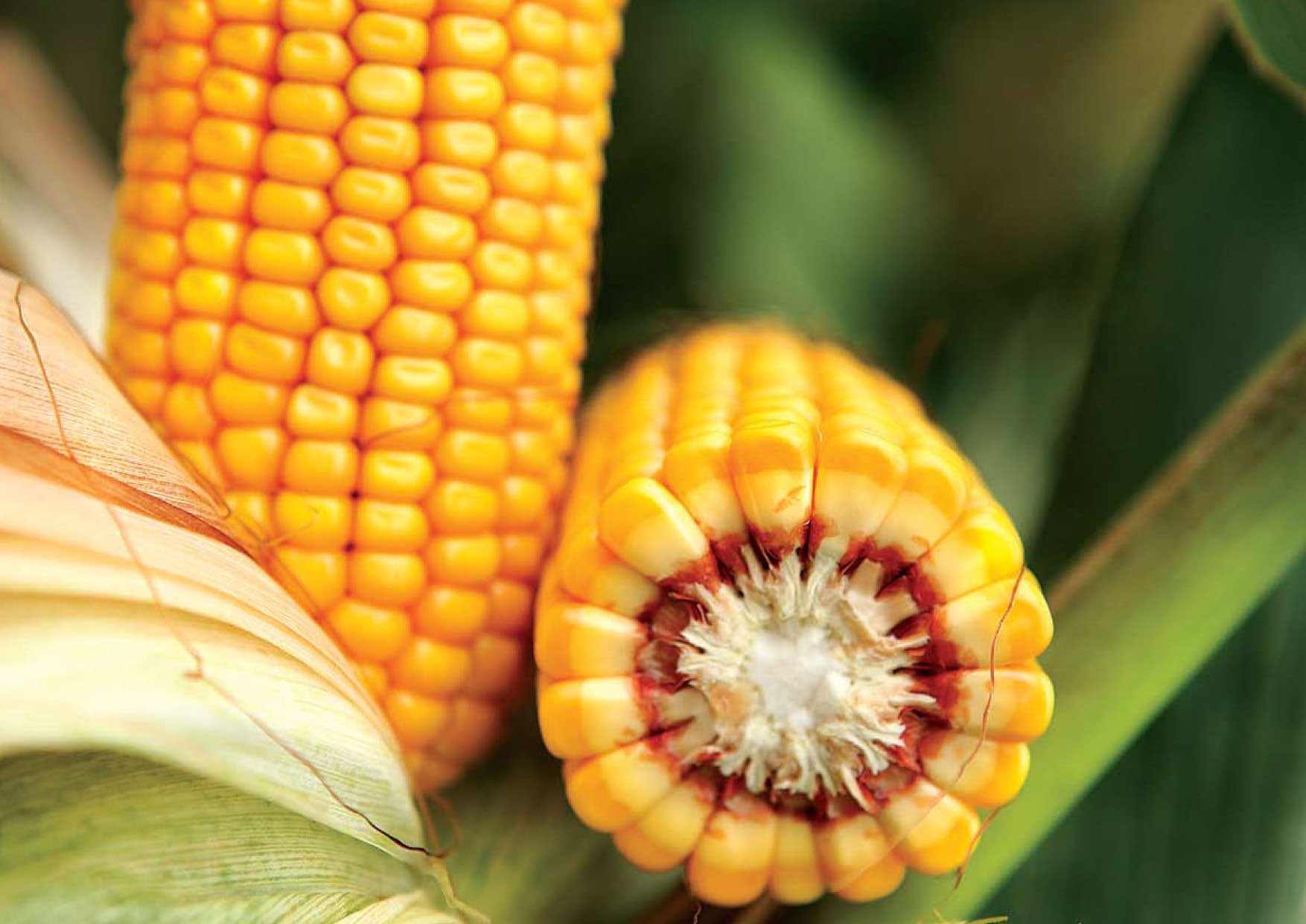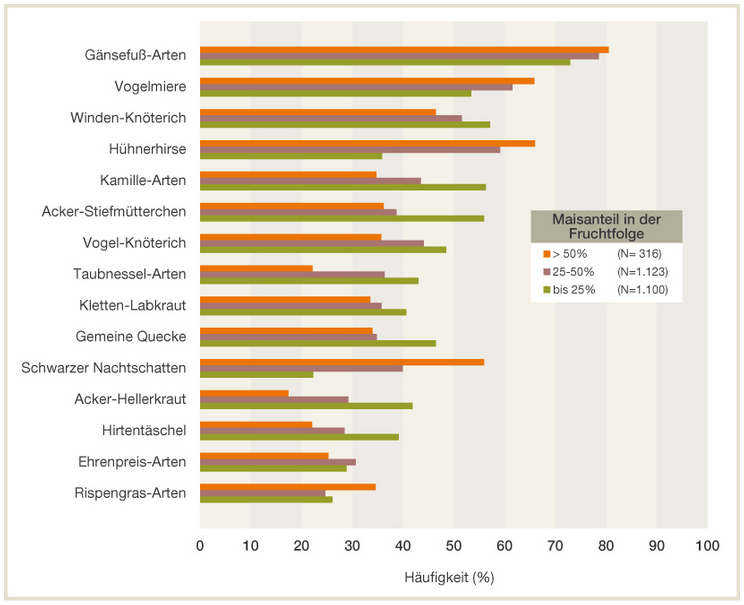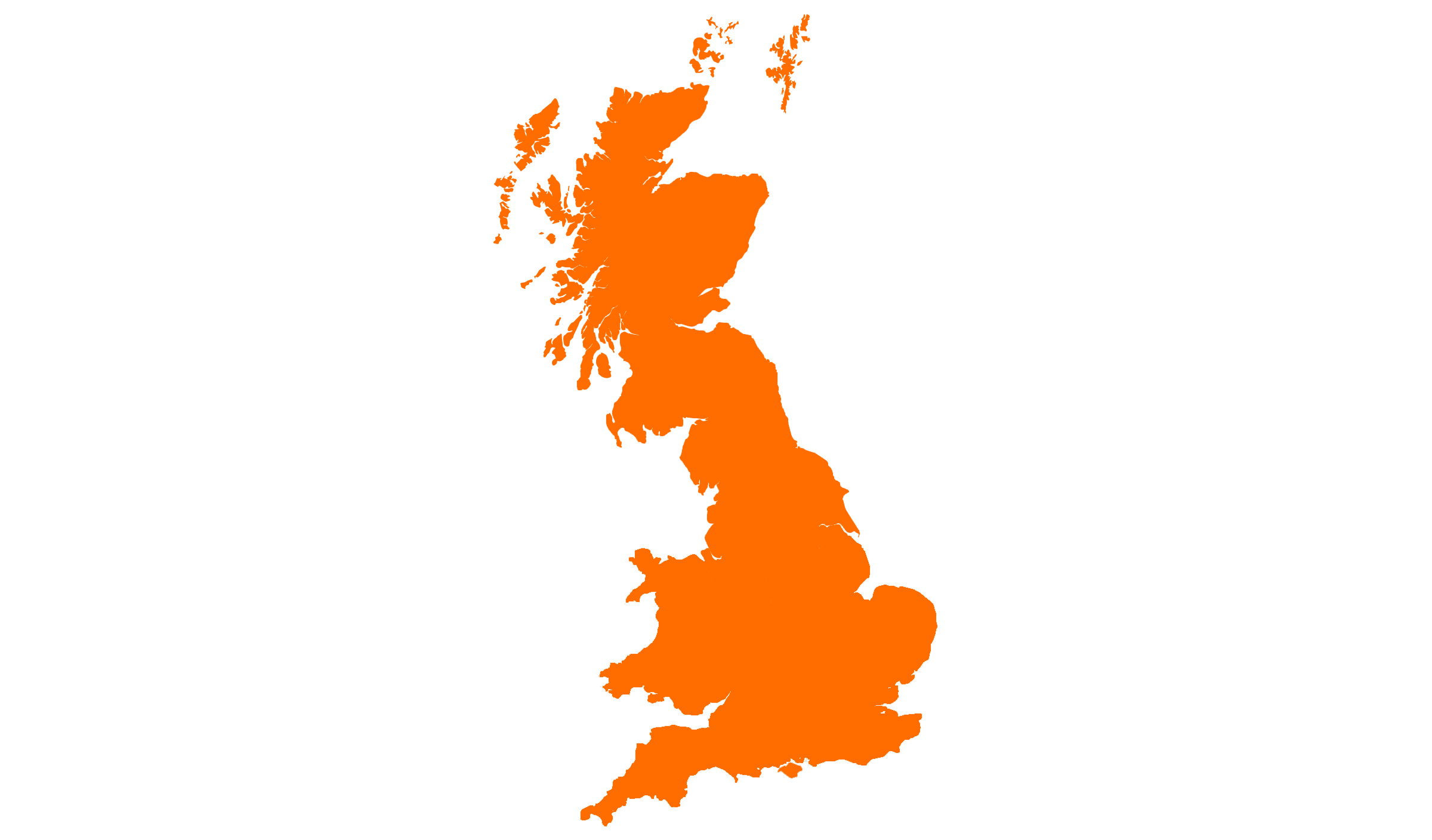The right plant protection - for healthy growth and reliable yields!
Keeping our crops healthy is one of the most important goals during the growing season. Only in this way can we ensure high yields and economic success. Weeds and grass weeds as well as diseases and pests are everywhere and compete with our plants or damage them.
Various methods of control and prevention exist for the great variety of risks and threats. KWS has compiled the most important facts for you.
Maize is particularly sensitive to weed competition in its young plant development. Weeds and grass weeds compete with maize for water, nutrients and light. The herbicide measures must be aimed at eliminating or suppressing the weeds until the maize series ends.
The proportion of maize in the crop rotation also affects the composition. Primarily goosefoot species, chickweed, millet and black nightshade increase with an increasing proportion of maize.
The figure illustrates the influence of the maize fraction in the crop rotation on the presence of weeds.
Herbicides available for maize cultivation may be used pre-emergence or post-emergence.Pre-sprouting treatments should only be carried out with sufficient soil moisture. Post-sprouting, a distinction is made between leaf-acting, soil-acting and combined preparations.
The following facts are generally applicable: Follow the instructions for use from pesticide manufacturers! Only in this way can safe use be guaranteed.
Leaf-active substances
Leaf-active substances exhibit their advantages primarily in rapid, good effects against weeds that have emerged and on dry and humus-rich soils. However, weeds that sprout after application are not detected.
The following points must be considered when using broadleaf herbicides (e.g., with the active substances: bromoxynil, bentazone, prosulfuron, rimsulfuron, nicosulfuron, foramsulfuron, sulcotrione, mesotrione, topramezone):
- Do not use with large temperature fluctuations
- Do not spray in strong sunlight (better in the evenings)
- Do not use in stress-weakened maize stocks
- Make sure there is enough wax on the maize leaves
- Do not exceed the recommended period of use
When using sulfonylureas (e.g. Cato, Motivell, MaisTer, Kelvin), stresses on the maize plants must be avoided. These include primarily strong temperature fluctuations between day and night and very cool or very hot weather after application.
Residual herbicides
Residual herbicides are applied at an early time point. Used on moist mineral soils; they show a significant lasting effect against weeds. For soil-acting herbicides (e.g., with the active substances: terbuthylazine, metolachlor, pendimethalin, flufenacet, isoxaflutole, metosulam, dimethenamid) should be noted:
- Effective only with sufficient soil moisture
- Ensure a well-deposited seedbed
- Soil type and humus content can influence the effect
Heavy old weeds in mulch sowing should preferably be eliminated prior to sowing by using non-selective glyphosate-based agents (e.g., Roundup, Touchdown, Clinic). For a safe effect of the glyphosate, the required exposure time (depending on the agent and size of the weeds) must be granted before seedbed preparation. When using the herbicides, attention must be paid to the time of use, the distance requirements for the protection of waters/non-target areas and the conditions of use. Improper use of herbicides can cause direct damage to maize plants as well as damage that is not directly detectable (brightening, twisting, etc.). For reasons of up-to-dateness and the large number of products and application variants, we make reference to the advice of the regional plant protection services and the manufacturer's product recommendations.
The use of insecticides has so far played a minor role due to the usually low pest pressure and the use of suitable dressing.
However, the European maize borer causes such great damage in some regions that it has to be combated. Here, insecticides are available as method to control them. Due to the late occurrence in the course of the vegetation, special equipment must be used in order to not damage the stocks.
Information on the timely application of approved insecticides is issued by the country's official alert services.
In contrast to cereals, rapeseed or Leguminosae, in which individual responses to the presence of pests may be made using a large number of insecticides, the number of insecticides authorised for maize is very small. In addition, with Mesurol liquid, only one insecticidal dressing agent is currently approved in Germany.
You can see an up-to-date compilation of pesticides with insecticidal activity authorised in Germany on the Web site of the Bundesamt für Verbraucherschutz und Lebensmittelsicherheit [Federal Office of Consumer Protection and Food Safety] (BVL):
Under the influence of factors favouring infestation, e.g. ideal weather conditions for fungal growth and a higher risk due to a higher infestation pressure on the acreage, leaf diseases occurring at different intensities in maize cultivation play a role. Various pesticides with fungicidal effect are available for combating leaf diseases.
You can see an up-to-date compilation of pesticides with insecticidal activity authorised in Germany on the Web site of the BVL:




